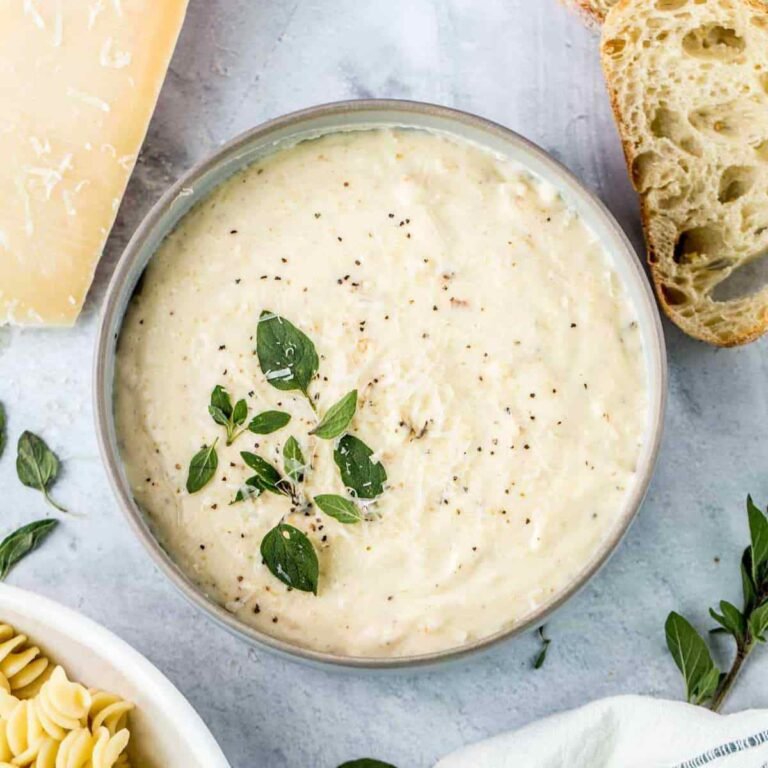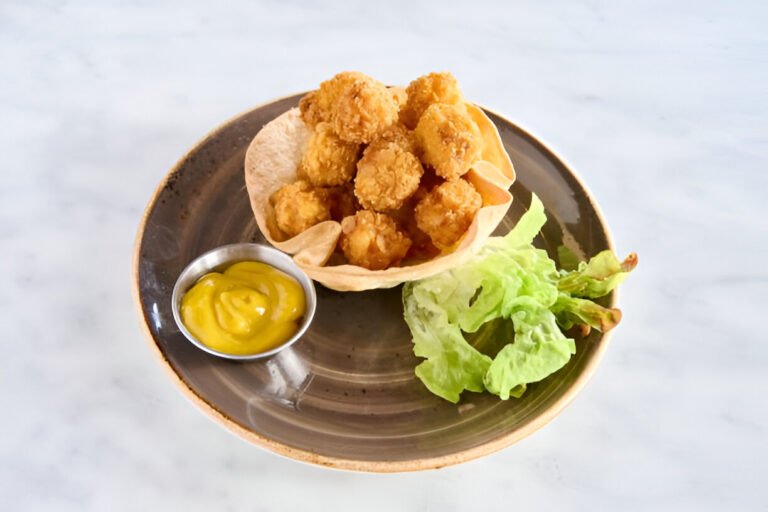How Do You Know When Pasta Is Done? Tips for Cooking Perfect Al Dente
Have you ever stood in your kitchen, staring at a pot of boiling pasta, wondering if it is ready yet? We have all been there, not sure when our pasta is perfectly cooked—not too mushy, not too hard.
The secret to pasta perfection lies in a beautiful Italian term: “al-dente.” But what exactly does “al-dente” mean, and how can you achieve it in your own kitchen?
In this culinary journey, we’ll demystify the art of pasta preparation, making you the master of the perfect pasta plate. You’ll learn the science. It’s about achieving the ideal balance of tenderness and firmness. We’ll reveal the tricks and techniques. They will transform your pasta-cooking game forever.
If you’re ready to banish overcooked, mushy noodles and make pasta that sings with flavor and texture, join us. We’ll explore the fascinating world of al dente pasta. Get your pots ready and prepare to become a pasta maestro in your own kitchen!
How Can You Tell If the Pasta Is Done?
A simple test to see whether your pasta is done is to cut one of the noodles in half using a sharp knife.
When you do, you’ll see that the noodle has a lighter ring around it than the rest of the spaghetti. At this point, the pasta is still undercooked. The thicker the white ring becomes, the less cooked it is. The narrower, lighter ring indicates al dente pasta.

The image above displays three levels of pasta completion. Undercooked is the one on the left. You can see that a white ring surrounds the still-dry spaghetti in the center. What we want is al dente pasta, which is what the spaghetti in the center has.
There is a solid white dot in the middle, suggesting that it still has some bite. You can see it. The one on the right is overdone. Its core is cooked through and has begun to expand and absorb water.
The Ideal Al-Dente Pasta
There is no widely accepted answer for how long to cook pasta. The cooking time will vary depending on the type of pasta and whether it is dried or fresh.
However, in general, you should cook pasta until it is “al dente.” This signifies the pasta is fully cooked yet still has a bite. Overcooking pasta can result in it being mushy and unappealing.
The term “al dente pasta” comes from Italian and means “to the tooth.” It refers to pasta that has been cooked to a firm but not hard consistency. The ideal al dente pasta should be cooked until it is just tender enough to bite into without becoming mushy.
So, how do you tell when your pasta is al dente? You should begin by checking the packaging instructions. This will give you an idea of how long to cook the pasta. Please keep in mind that these are only guidelines. You may need to change the cooking time according on your tastes.
For example, you may want your pasta softer or harder. You may also need to change the cooking time if you’re using a different type of pasta than the package specifies.
When checking pasta for doneness, your goal is to get the ideal al dente texture. Begin by following the pasta package’s recommended cooking time, but keep in mind that this is only a starting point.
To verify accuracy, perform a taste test a minute or two before the recommended time expires. The goal is a hard but sensitive bite.
The color of the pasta can be used to judge its readiness. Al dente pasta is pale throughout, with a small stiffness in the center. Avoid overcooking, which produces mushiness. Another effective method is to test a single strand by throwing it against the wall; if it sticks, it’s ready.
Furthermore, a simple tactile test entails pressing a spaghetti piece between your thumb and forefinger; there should be some resistance.
How Long Should You Cook Al Dente Pasta?
So, how long do you cook pasta to achieve the perfect al dente texture? For dry, store-bought pasta, you will want to cook it for about 10 minutes.
Fresh pasta will cook in about half the time, so 5 minutes should do the trick.
Set the timer for five minutes before they say it needs to be finished.
And if you’re using a pressure cooker, your cooking time will be even shorter!
Once your pasta is cooked al dente, be sure to drain it and rinse it with cold water. This will stop the cooking process and prevent your noodles from becoming overcooked and mushy.
How Do You Tell If Your Pasta Is Undercooked?
When it comes to pasta, there is a thin line between al dente and undercooked. Undercooked pasta is not only unappetizing, but it can also be difficult to eat.
To determine if you enjoy the noodles, give them a taste and feel.
Sticks of Pasta
When pasta is cooked properly, it should be tender but still have a bit of a bite to it. If your pasta is not sticking to the sides of the pan, it is likely undercooked.
Take a bite out of it
The best way to tell if pasta noodles have been cooked or are still undercooked is to bite into them and trust your instincts. Noodles are undercooked if they are still crunchy and difficult to bite into. Undercooked pasta is hard to digest and can cause stomach upset.
If you bite into the pasta and see a white “core,” it hasn’t been cooked all the way through.
Choosing the Perfect Pasta for Al-Dente Texture

Choosing the right type of pasta to get the desired al dente texture will improve your cooking. With so many alternatives, it’s critical to grasp the differences between them.
Linguine has flat, thin strands. It pairs well with lighter sauces, resulting in a beautiful balance of texture and flavor. Meanwhile, Penne, with its cylindrical form and diagonal cut, is ideal for holding onto thick, chunky sauces. They offer a rush of flavor in each bite. If you prefer a more delicate texture, Angel Hair’s fine strands cook rapidly and mix well with light, oil-based sauces or fresh herbs.
Texture is determined by more than just the type of pasta used; cooking time is also important. Rigatoni, which has large, ridged tubes, is best cooked somewhat longer, providing a pleasing chewiness while preserving its structure. Similarly, fusilli’s spiral form enhances creamy sauces by trapping flecks of sauce within its curves.
Farfalle, also known as bow-tie pasta, cooks quickly and has a firm bite, making it an excellent choice for pasta salads or creamy, light sauces.
Understanding the distinct characteristics and cooking requirements of different pasta types is essential. It makes creating the ideal al-dente texture simple. This improves the dining experience.
Also see:
Avoid These Common Blunders in Making Pasta
Pasta is probably one of the first foods you learned to make as a kid. However, this does not mean that you have done everything correctly. You can make decent pasta and serve it with a jar of sauce, but making good pasta requires a great deal more time and attention to detail.
Putting dry noodles in boiling water isn’t the only thing you’ll have to think about. Among the most prevalent errors are the following:
1. Lack Of Water Is Being Used
One of the most common is not using enough water. This can cause the pasta to stick together and become clumpy. It can also make the sauce not adhere to the pasta.
It’s critical to get the water-to-pasta ratio right. If you do not use enough water, your spaghetti will be gummy, mushy, and starchy.
TIPS
As a rule of thumb, you’ll need around four quarts of water per pound of pasta. You should only use half of a 4-quart stockpot while cooking a pound of dry pasta. This is a moderate pot in a home kitchen.
2. Not Boiling the Water Before Adding the Pasta
Another mistake is not boiling the water before adding the pasta. This can result in uneven cooking and a less than desirable texture. While adding the pasta to the boiling water, let the water come to a full rolling boil.
3. Adding The Pasta To The Soup Too Early
If you just put the pasta in a pot of soup that hasn’t yet reached a rolling boil, it won’t cook properly. Never, ever cook pasta in cold water. It adds time to the cooking process and softens the final product. Italian grandma’s view it as a culinarily repugnant sin!
4. Forget to Salt the Water
Finally, people often forget to salt the water. This can make the pasta taste bland and unappetizing. By avoiding these common mistakes, you can ensure that your pasta dish turns out perfectly every time! But you should measure your salt intake to make your pasta less salty.
5. Sauces Call For Oil To Be Mixed With Water
According to some, if you add a little olive oil to the pasta water, the pot won’t overflow and the noodles won’t stick together as much. In Italian cooking, it’s considered a mortal sin once more. Pasta, whether fresh or dried, should never have any oil added to it. This is due to the oil preventing the sauce from adhering to the noodles.
TIPS
Once the water has come to a rolling boil, only then should the pasta be added to the saucepan and cooked. As a result, salt is a better choice than oil.
Once the water has come to a rolling boil, only then should the pasta be added to the saucepan and cooked. As a result, salt is a better choice than oil.
6. Not Keeping Pasta and Sauce Separate
Reheating pasta can be tricky, but there are ways to do it so that it still tastes good.
When reheating pasta, keep the pasta and sauce separate. If you’re storing leftover pasta in the fridge, keep the noodles and sauce separate. This will help prevent the pasta from getting mushy and clumpy when you reheat it.
7. A Brief Submersion Is All That Is Required
If you’ve checked to see if it’s done, and it is, remove it from the water. If you do this, the pasta will be overcooked when you drain it since it will take longer to cook.
Preparing the sauce ahead of time eliminates the need to waste time waiting for the pasta to finish cooking. To avoid pasta overcooking, you can quickly drain and sauce the pasta in this manner.
Various varieties of Italian pasta are described in detail on this page.
Conclusion
To answer the question, “How do you tell when pasta is done?” We’ve analyzed the various factors that go into determining whether pasta is cooked to a satisfactory degree. In addition, we take a quick look at some of the most common pasta-making blunders to avoid. The obvious way is: it’s done when it’s firm to the bite but not crunchy.
If you want your pasta to be slightly less cooked than al dente, go with a thicker ring. Pasta that has been properly cooked should not have a white ring around the edge. Using this method, you may use any sort of pasta, although it works best with tubes like rigatoni or ziti. Cooking and eating pasta on diet will never be easier than this.
FAQs on Al-Denten Pasta
Are there any shortcuts to cooking al-dente pasta?
Some cooks use the “one-pot” method, where pasta is finished in the sauce. While it can save time, it requires practice to get it right without overcooking the pasta.
What’s the role of salt in cooking al-dente pasta?
Salt is vital. It enhances the pasta’s flavor and keeps its structure during cooking. This helps give it that al-dente bite.
Can I achieve al-dente with gluten-free pasta?
It’s challenging, but possible. Follow the maker’s instructions. Watch the cooking time closely. Gluten-free pasta can go from firm to mushy quickly.
What are some common pasta sauces that pair well with al-dente pasta?
Al-dente pasta pairs wonderfully with tomato-based sauces, olive oil and garlic, or simple herb and butter sauces. It’s also great for salads.
Is al-dente the same for all pasta shapes?
No, the ideal al-dente texture may vary slightly depending on the pasta shape. Shorter shapes tend to be slightly firmer than longer ones when cooked al-dente.

Kathy is a restaurateur, artist, and blogger. After spending more than 10 years in the restaurant industry, she has decided to go digital and share her expertise and experience online.







